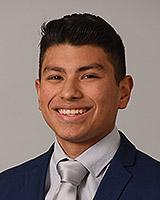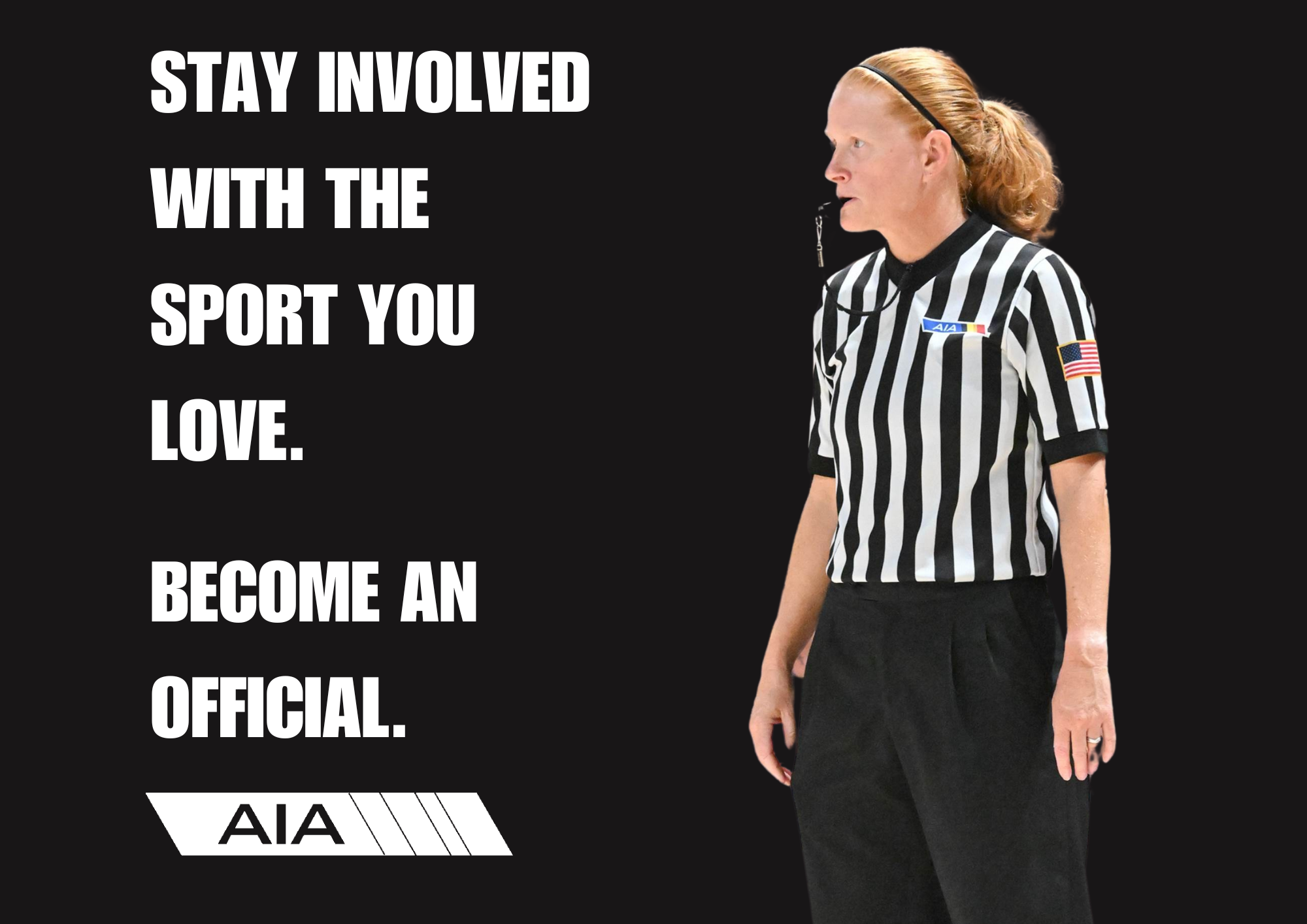Life After Glory -- Rebirth as Firebirds
December 2, 2017 by Jorge Santos, Arizona State University
TEMPE, Ariz. - It isn’t often that a high school program has a former first round draft selection and a five-star athlete on their coaching staff.
What makes the two more interesting is that they are colleagues with similar football careers -- wide receiver coach DaVonte’ Neal, who played at the collegiate level, and head coach Thomas Lewis, who was able to live the dream at the professional level.
Neal was one of the most talented football players in the history of Arizona, being mentioned with names such as Arizona Cardinals wide receiver D.J. Foster and Texas A&M star Christian Kirk. And his name is set in stone as the greatest player in the history of the Chaparral High School.
Neal set records, was nationally renowned and played an important part to a program that three-peated from 2009 to 2011. Following a disappointing college career, he faded away and left fans to wonder where he had gone.
Turn the clock backwards to 1992 -- 19 years prior to Neal’s senior year. A wide receiver named Thomas Lewis was giving defenses nightmares in the Big Ten. Once pinned the fastest player in the NCAA, Lewis, just like his young assistant, was breaking impressive records. He played at Indiana University, and in his senior year, broke three separate records in one game.
Lewis had 12 catches for 285 yards, including a 99-yard touchdown reception. A stat line that is still unbroken in receiving yards and is still the longest play from scrimmage.
He ran a 4.28 40-yard dash, and is one of the most decorated wide receivers in Hoosiers history. After going 24th overall in the 1994 NFL Draft, Lewis took his talents to the New York Giants, but his career quickly flatlined in the Big Apple. Lewis suffered multiple injuries in his career and never got healthy enough to meet his potential. In 1999, he vanished from the game as well.
Two men who were abandoned by the game in similar ways find their comeback to football on the same sideline.
The Legendary Firebird, DaVonte’ Neal
The hype surrounding DaVonte’ Neal was electric.
He was the best recruit in the state of Arizona, the star running back at Chaparral High School at the team's height of success and was the guy every coach told their player to watch.
I know that’s what my coach was telling me.
“It was so much fun,” Neal said. “It was fun just to go out there and help my team win by running week in and week out.”
Neal’s football career started when he was 10-years-old, and while pee wee football has no weight to it, Neal was the most disciplined player on the field.
I remember as a child watching a 13-year-old Neal doing 10 pushups on the sidelines after dropping a pass. That’s just the type of player he was -- accountable.
Neal, a native of Phoenix, spent his first two seasons at Cesar Chavez High School, where he claimed all-region honors as a freshman on the varsity squad.
“I was having fun with football,” Neal said. “I honestly didn’t start thinking about that [transferring] until high school. Chaparral ended up being a great place to get a better education and better my career in football.”
Neal transferred to Chaparral following the end of the 2009-10 campaign and was officially enrolled as a Firebird the following January.
And that’s what folks remember Neal in -- cardinal red, scoring touchdowns for Chaptown.
In two seasons at Chaparral, Neal accumulated 28 rushing touchdowns, 25 receiving touchdowns, and gained over 5,250 all-purpose yards. He averaged 181.6 yards per game, and 11.25 yards per carry as a Firebird.
Even his consistent statistics don’t do enough justice for how he looked on the field. Once the ball touched his hands, he emulated Emmitt Smith in his prime.
Drama started unfolding following his senior year of high school, when he was poised to make his collegiate commitment at Kyrene de la Esperanza, his former elementary school.
Neal was stuck between two schools: Notre Dame or the University of Arizona.
There were rumors about what happened the morning of his announcement, and an article by Mike Piellucci with Vice Sports strengthened the claims. Neal supposedly wanted to go to Arizona, but his father, Luke, had a strong preference for Notre Dame.
Around 2 a.m. on the morning he was supposed to announce his commitment, a family emergency forced Neal and his family to miss their time slot at 8 a.m. Neal did not elaborate the emergency when he was asked.
According to Piellucci, close sources and teammates thought Arizona was the school, but Neal would ultimately commit to Notre Dame.
“Leading up, everything everyone told me was, ‘Arizona, Arizona, Arizona.’ And then he ends up going to Notre Dame because that’s what I heard dad wanted him to do,” said Arizona prep recruiting reporter Jason Jewell, according to Piellucci.
The same article reported that Neal’s best friend, Cody Ippolito, who had signed his letter of intent to Arizona, was in the crowd that morning telling the audience the same story.
Neal has never confirmed any of these suggestions, and maintains his accounts.
“It was just a family emergency. I don’t really want to speak about it,” Neal said.
After only catching one pass his freshman year as a member of the Fighting Irish, he ended up transferring closer to home. Tucson was his next destination.
Neal had many family factors that played into this decision, but one clearly stood out over the rest. He had become a father during his time in South Bend.
“She plays a big role in my life now just because she taught me how to grow up and become a man,” Neal said.
However, if Neal’s life had not been blessed by the birth of his daughter, things would have ended up differently.
“I would’ve been at Notre Dame,” Neal said. “It wasn’t for that I definitely would’ve stayed at Notre Dame."
Most players lose themselves during their ineligible year. Neal continued to become a student of the game.
“It was actually good for me,” Neal said. “It gave me time to spend with my daughter because I wasn’t traveling. It gave me time to learn the game from both sides of the ball.”
Once Neal came back for his junior season, he made a position change to defensive back and would still return punts up until his senior season. Interesting enough, he would reunite with his former high school coach Charlie Ragle, who was a special teams assistant for the Wildcats until 2016.
“I still call Ragle up to see how he’s doing,” Neal said. “He was there for four years at U of A with me, and I was also there for two years at Chaparral with him. That’s six years under our belt, so we got to know each other a lot throughout those six years, and I can definitely call Ragle a friend and a coach.”
Neal’s career would never recover the way fans expected. One year after graduating, he scored a tryout with the Toronto Argonauts in the Canadian Football League. He was ultimately cut.
“My career was fun, and that’s exactly what I wanted it to be,” Neal said. “But now is time to be a coach and help kids out.”
He was recommended by former Chaparral head coach Conrad Hamilton, who had spent the last five seasons as a defensive assistant at Arizona State. Ultimately the head coach decided to hire him -- that man was none other than Lewis.
The Midwest Speedster, Thomas Lewis
Lewis and Neal have experienced similar football careers, one from high school to college, and one from college to the professional level.
Growing up in Arkon, Ohio, Lewis has always been a Midwest guy. He attended Akron Garfield High School before receiving many offers from schools including Michigan, Ohio State, Tennessee and Indiana.
“I picked Indiana because they had a good quarterback, who was Trent Green. They had a coach who I absolutely loved and respected and I thought I could go there and play my first year.”
Lewis’ scorching quickness gathered first-round potential, and the New York Giants picked him up with theirs in 1994. Just like Neal’s career, troubles arose as Lewis turned the page to the next level.
“It was somewhat tumultuous,” Lewis said. “It was a perfect fit in their eyes, and for the simple fact that I played in the Big Ten -- same weather, same style of football.”
Lewis simply didn’t go to a very good team.
“It was a rebuilding year,” Lewis said. “We lost [Jeff] Hostetler, we lost Phil Simms and so our starting quarterback was our third-string quarterback Dave Brown.”
Don’t worry, I didn’t know who Brown was either. Brown was only a starting quarterback for three seasons, including the 1996 season where the Giants finished with the 32nd-ranked offense.
Lewis wasn’t shy to talk about his biggest issue in New York -- his durability.
“I got injured every season I was there,” Lewis said. “First year I had a pin put in my big toe after Week 2. Next year I had knee surgery after Week 7. And then the third year I had my sesamoid bone removed from my left foot, probably in October or November.”
Regardless of his tenure as a pro, he took home some unforgettable experiences.
“You can’t hear anything,” Lewis said. “When you’re getting a cadence, you can’t hear anything except for that cadence. Until the play is over, there is complete silence…it’s a very special, surreal feeling man. You can’t get it any other way.”
After the 1997 season, Lewis’ time with the Giants was done. And after one season with the Chicago Bears, his career was over.
The lights, the crowd and the noise were prematurely taken. But contrary to other retirees, Lewis didn’t have trouble finding his place in the real world.
“When I went to college it was to get a free education, and getting that free education meant getting a job afterwards. It was never to play professional football. That was just icing on the cake.”
When speaking to Neal, his belief on his football career was enlightening, and comparable to Lewis’.
“Football is something that everybody expected me to do when I grew up,” Neal said. “Nobody really sat down and ask ‘Hey, you know what -- what is it that you honestly want to do? Do you wanna play football?’ No one really got the inside story of what it is that I wanted to do, and this is why I’m coaching.”
Football is a brutal sport, mentally and physically. In spite of what their careers turned out to be, both men returned to the sport with all class, just wanting to give back to the sport that gifted their future.
“I thought I would never ever coach,” Lewis said. “My biggest callback to coaching football was understanding that people made certain sacrifices for me…I thought it would be selfish of me to not go and pass back that knowledge.”
Lewis just finished his third season at Chaparral, and according to first-year athletic director Sam Messina, he should stay there awhile.
“I haven’t talked to Lewis about this upcoming season, but I expect him to return,” Messina said.
As long as Lewis is there, Neal is there to stay as well.
“He interacts with the players on a different level than the rest of us,” Lewis said. “He’s a valuable part of our staff here.”
The Firebirds finished the 2017 season with a quarterfinal loss to the Centennial Coyotes, 34-27, but deputy head coach Conrad Hamilton left an ode to his friend.
“These boys left it on the fields for themselves, for Lewis and more importantly our tradition,” Hamilton said. “We’ll be back.”
Neal solidiefied that point for where the Firebirds are heading.
“We’ll win state in the next two years,” Neal said. “We have a young team full of sophomores, and when they’re seniors, I know we’ll be in the ‘ship.”
Just football players at heart, giving back to the game they love.


